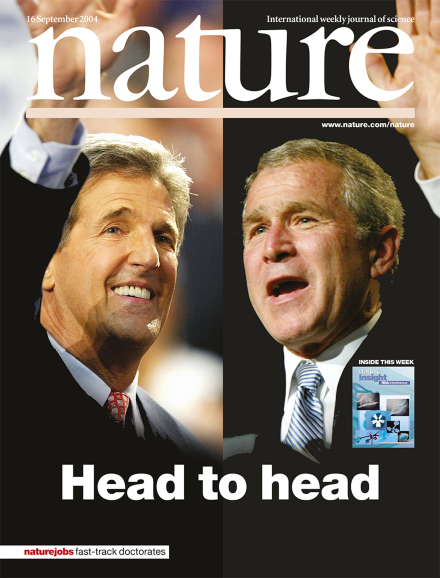Volume 431 Issue 7006, 16 September 2004
Editorial
News
News in Brief
News Feature
Correspondence
Books & Arts
Turning Points
News & Views
Research Highlights
Brief Communication
Article
Letter
Introduction
-
RNA interference
Insight:
Review Article
-
RNA silencing in plants
Insight:

